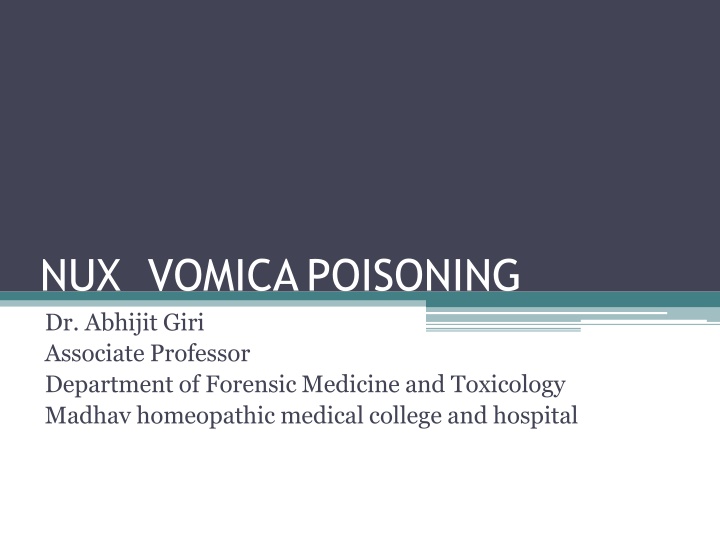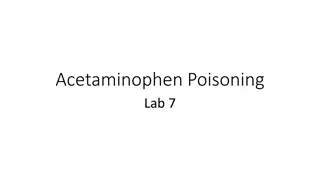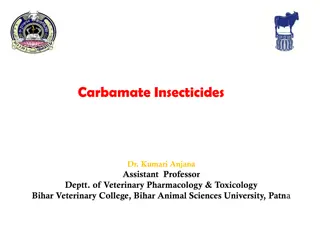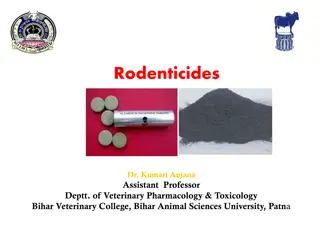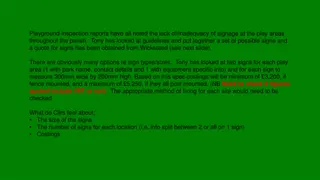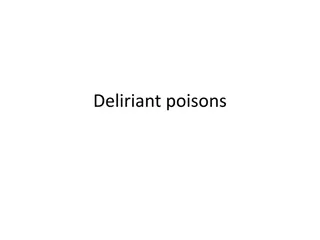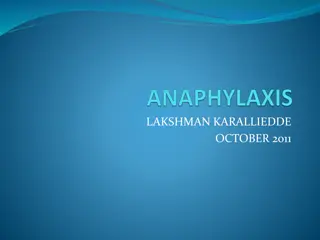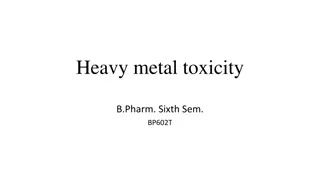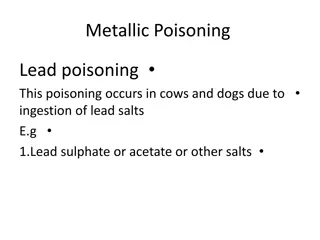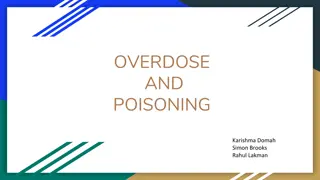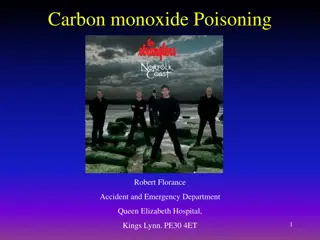Nux Vomica Poisoning: Signs, Symptoms & Treatment
Strychnos Nux Vomica, also known as Poison Nut, is a toxic substance with alkaloids like Strychnine and Brucine. This poison acts as an antagonist of glycine, affecting motor functions and causing convulsions. Learn about its mechanism of action, uses, and differentiate it from tetanus poisoning.
Download Presentation

Please find below an Image/Link to download the presentation.
The content on the website is provided AS IS for your information and personal use only. It may not be sold, licensed, or shared on other websites without obtaining consent from the author.If you encounter any issues during the download, it is possible that the publisher has removed the file from their server.
You are allowed to download the files provided on this website for personal or commercial use, subject to the condition that they are used lawfully. All files are the property of their respective owners.
The content on the website is provided AS IS for your information and personal use only. It may not be sold, licensed, or shared on other websites without obtaining consent from the author.
E N D
Presentation Transcript
NUX VOMICAPOISONING Dr. Abhijit Giri Associate Professor Department of Forensic Medicine and Toxicology Madhav homeopathic medical college and hospital
OBJECTIVES At the end of this session you will be able to Understand the Action of Nux vomica Know the Signs and symptoms of this particular poisoning State the FD & FPof Nux vom poisoning Explain the circumstances and treatment of poisoning Differentiate this poisoning from tetanus
STRYCHNOS NUX VOMICA Spinal poison Medium sized tree Family-- Loganiaceae Synonyms Poison nut Kuchla Quaker buttons Vomit nut Dog buttons
USES Strychnine is extremely toxic Used in veterinary medicine as CNS stimulant and tonic Used as antidote to barbiturate poisoning Used as rodenticide
CHEMICAL CONSTITUENTS mainly alkaloids Strychnine Iso strychnine protostrychnine Brucine Vomicine Novacine
The seeds contain Strychnine and brucine as active principle
MECHANISM OF ACTION An antagonist of glycine (inhibitory neurotransmitter) Inhibitory glycine receptors are more in spinal cord &brain stem where they are mainly involved in regulating motor functions
Alkaloid of NV is a potent convulsant poison It lowers the threshold for stimulation of spinal reflexes by blocking inhibitory pathways exerted by motor cells in spinal cord As a result,any stimulus like noise,light even breeze causes a violent reflex action producing general contraction
EFFECTS Increased reflex action Increased rate of respiration Increased force,rate,and volume of the pulse Raised arterial pressure Increased sharpness to sight,hearing,and smell General irritation
FD One crushed seed OR 1-2mg/kg FP 1-2 hrs
ABSORPTION AND EXCRETION Rapidly absorbed from GIT,nasal mucosa and all parenteral sites Rapidly metabolised in liver Its highest concentrations are seen in the liver,kidneys,and blood
SIGNS AND SYMPTOMS If the seed are taken as a whole non poisonous(the thick pericarp is not digested by gastric juice) Only the broken or chewed seeds cause poisoning s/s appear after 15-30 mts of the ingestion
SIGNS AND SYMPTOMS Bitter taste Anxious &restless Clonic ,tonic seizures Affects flexor and extensor muscles simultaneously
Clonic spasms refer to alternating involuntary muscular contraction and relaxation in quick succession. Tonic spasms are rigid muscle contractions that last a period of time.
Convulsions with consciousness Convulsions are repeated in every 3-4 minutes in between convulsions are decreased Convulsions are very painful &unfortunately person remains conscious during
Risus sardonicus and lock jaw(trismus) due to muscle spasm Opisthotonus spasm of the muscles causing backward arching of the head, neck, and spine, ( in severe tetanus, some kinds of meningitis, and strychnine poisoning.) Respiratory distress and death
TREATMENT No specific antidote Maintain clear airway and adequate ventilation Control of convulsions diazepam,general anaesthetics,muscle relaxants Barbiturates are antidote Gastric lavage with potassium permanganate,if there is no convulsions Symptomatic treatment
P/M FINDINGS Not characteristic Signs of asphyxia Rigor mortis appears and disappears early Extravasated blood may be seen the muscles
Congestion of viscera Postmortem caloricity Spinal cord congested ,shows haemorrhage in anterior &posterior horns
M/L IMPORTANCES Deadly poisonous Mostly accidental Due to overdose,quack remedies,in case of children eating seeds Homicide is rare due to its bitter taste
Aphrodisiac Cattle poison Arrow poison to kill dogs and rats Tolerance develops on repeated consumptions Can be easily detected even in decomposed body
HOW TO DIFFERENTIATE NUX VOM POISONING FROM TETANUS INFECTION?
FEATURES STRYCHNINE POISONING TETANUS SL NO 1 History of injury None Present 2 3 Onset Site of action Sudden Post synaptic membrane Gradual Presynaptic membrane 4 Muscles affected All muscles are affected at the same time Does not start in, nor esply affect Starts in and affect Not affected at the same time 5 Lower jaw jaw(lock jaw) Rigid 6 Muscle condition Relaxed in between convulsions 7 8 FP 1-2 hrs Strychnine found >24 hrs No poison Chemical analysis Culture 9 No growth Clostridiumtetani present 10 Progression Steadily worse/better Rarely steady.variations seen
